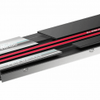SSD Performance Linear Read and Write performance analysis
SSD Performance Linear Read and Write performance analysis
In this review chapter, we will fill the SSD with data and observe what happens to the write performance due to doing so. So, for example, if the SSD has a capacity of 2TB, we'll read and then write continually. So we can see how the SSD would react simultaneously when subjected to large amounts of reading and writing activities. As a solution to the sluggish read/write performance of TLC SSDs, manufacturers have added an SLC cache, sometimes known as a pSLC cache, into their products (pseudo). This test can examine what happens when the cache fills up, and the write speed returns to the lowest possible value. The amount of space available is determined by the capacity of the SSD. If free SLC cache space is still available, the SSD's read/write performance is comparable to that of SLC NAND as long as the area has not been utilized. When the SLC cache is completely depleted, the firmware (FW) collects background garbage to clear the remaining space. Additionally, while garbage collection occurs, data is still being sent to the drive, adversely affecting its performance.
The read performance remains constant across the entire storage capacity; we average at ~5500 MB/sec throughout the linear reading process.
Linear write testing then; When it comes to writing performance on any NAND storage device, the infamous Achilles heel comes into play - if the pSLC buffer runs out of space, and once that happens, you're back to bare TLC write performance. We peak at ~5700 MB/sec, and after ~33% (660GB) percent written on the SSD, writes drop and average around 1000-1100 MB/s (which is still about two times more than the best SATA SSDs).



